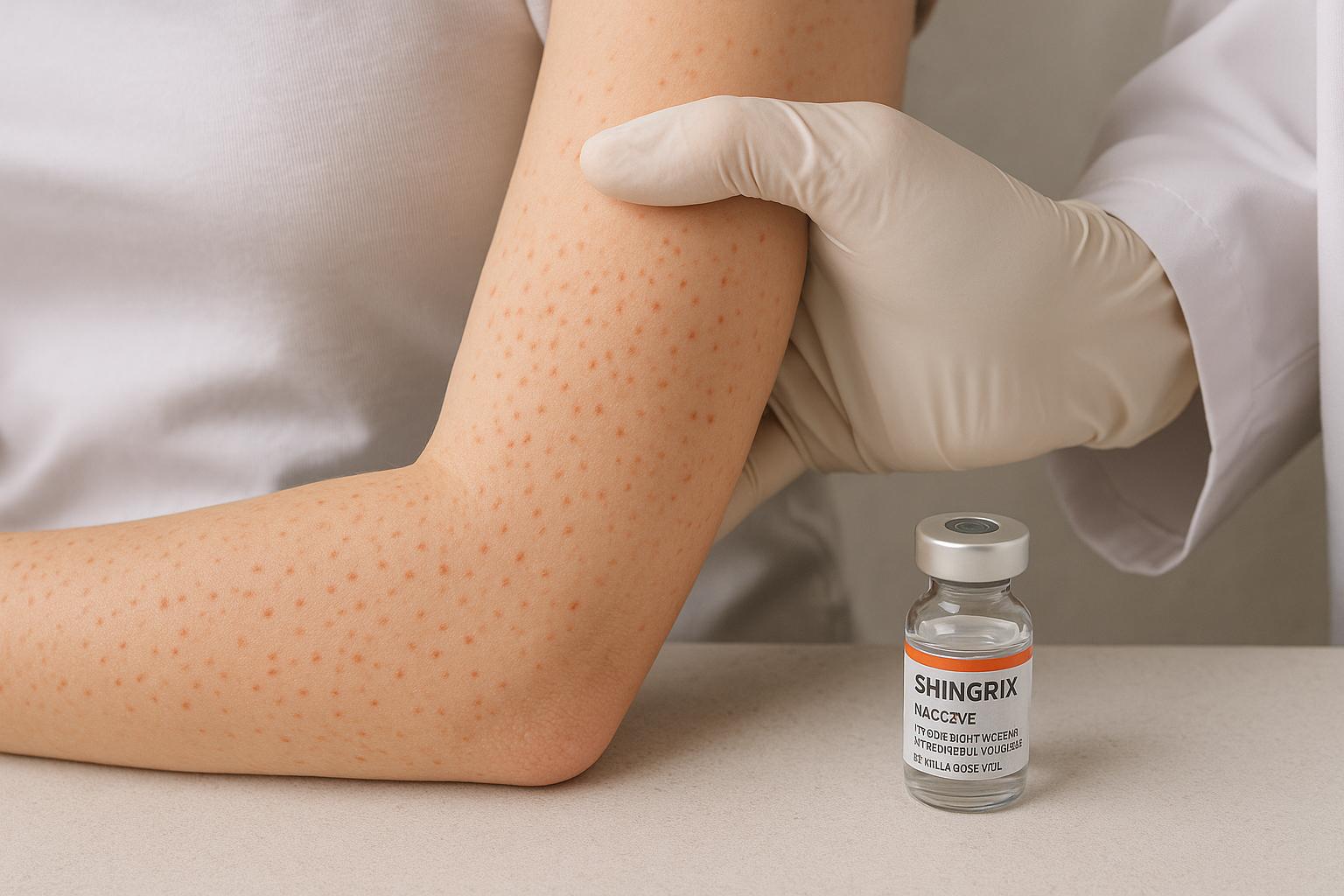Red bumps on the upper arms often raise concerns, but a common and harmless skin condition known as keratosis pilaris (KP) is frequently the cause. This condition affects more than four in ten adults and manifests as rough, small red or skin-coloured bumps, commonly described as resembling goosebumps. The bumps result from an excessive build-up of keratin, a protective protein in the skin, which blocks hair follicles and leads to the distinctive rough skin patches. Besides the upper arms, KP frequently appears on the thighs, buttocks, and back.
Keratosis pilaris is generally harmless and non-infectious, but it can cause some itchiness and tends to worsen in winter when the skin becomes drier. Though the condition often improves or disappears by the age of 30, managing its appearance and texture can be challenging. The first step in treatment usually involves regular use of moisturisers, specifically medical emollients available over the counter. Products containing salicylic acid or urea are particularly beneficial as they help in softening and flattening the bumps. Additionally, ingredients like lactic acid and alpha hydroxy acids are known to exfoliate and remove dead skin cells, promoting smoother skin. Where over-the-counter treatments are insufficient, healthcare providers may prescribe topical creams such as retinoids, including tretinoin, which promote cell turnover and prevent follicle blockage, or mild steroids to reduce any accompanying inflammation.
Advice on prevention and management also includes lifestyle adjustments, such as taking lukewarm rather than hot showers to minimise skin irritation, avoiding harsh soaps and exfoliants, and using a humidifier to add moisture to indoor air, especially during colder months. Regular gentle exfoliation with suitable scrubs can contribute to improving dry, rough skin associated with KP. A formal diagnosis from a general practitioner is recommended before starting treatments, which can often be arranged through virtual consultations by submitting photos of the affected area.
Beyond skin concerns, the recent rollout of a new and improved shingles vaccine by the NHS offers enhanced protection for certain age groups. Shingles, caused by the reactivation of the chickenpox virus, can lead to painful blistering and nerve pain, particularly in older adults or those with weakened immune systems. Historically, the Zostavax vaccine was available on the NHS but offered only around 40% effectiveness. Since 2023, the more effective Shingrix vaccine, providing up to 97% protection, has been introduced but is currently limited to people aged 70 to 80 and those turning 65. Those who have previously received Zostavax within the last decade are not eligible for Shingrix under the NHS programme. However, individuals with severe immunosuppression, regardless of age, can now receive Shingrix. Patients who don’t qualify under NHS guidelines can also choose to pay privately for the vaccine, typically around £460 for the two-dose course.
Research beyond the UK supports the superior efficacy of Shingrix, with recommendations from the US Centers for Disease Control and Prevention for its use in adults aged 50 and over, including immunosuppressed populations. Furthermore, emerging studies suggest the shingles vaccine may reduce the risk of cardiovascular events like heart attacks and strokes by about 18-21%, highlighting additional potential health benefits.
When managing skin conditions such as keratosis pilaris or considering vaccines like Shingrix, it is essential for patients to consult healthcare professionals to receive appropriate advice tailored to their individual circumstances. Treatment options and eligibility criteria can be complex, especially for vaccines where age and prior inoculations influence availability.
📌 Reference Map:
Source: Noah Wire Services
